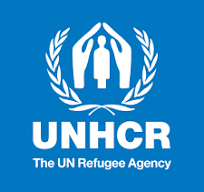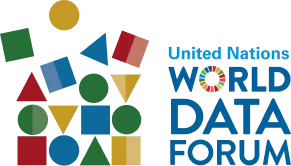

Open access to thematic indicators on forcibly displaced and stateless persons
UNHCR
World Bank-UNHCR Joint Data Center (https://www.jointdatacenter.org/)
UNHCR’s global objective is to be a trusted leader in the production, analysis and dissemination of high-quality data on forcibly displaced and stateless persons.
In support of this, UNHCR will facilitate open access of over 25 internationally comparable thematic indicators on forcibly displaced and stateless persons in 25 host countries and territories covering at least 5 thematic areas by 2030.
The objective of this commitment is to hold UNHCR and the international community accountable for ensuring that the unique experience of forcibly displaced and stateless persons is at the forefront of our data landscape. Making this data available and easily accessible will raise awareness of the past, present and potential future experience of these groups, which will in turn strengthen the evidence base for policy and programming.
The availability of data on themes reflecting the progress towards durable solutions (such as socioeconomics, health, water and sanitation, etc.) and the protection situation of forcibly displaced and stateless persons are a key in planning, programming and policy. (Global Compact on Refugees, 2018) Several UNHCR standard surveys and reporting mechanisms produce or compile such data, namely UNHCR’s Forced Displacement Survey (FDS), Results Monitoring Survey (RMS), Standardized Expanded Nutrition Survey (SENS), and the Global Compact on Refugees (GCR) Indicator Report, to name a few. While numerous online platforms exist for centralizing, standardizing, and accessing data on usual resident population groups such as the World Bank DataBank, UNICEF Data Warehouse, and the SDG Global Database, none of these platforms offer data disaggregated by forced displacement and statelessness status leaving a gap in the efficient monitoring of key indicators on these vulnerable groups.
The success of this commitment relies on three key activities, already underway by UNHCR’s Global Data Service (GDS) with the support of the World Bank-UNHCR Joint Data Center (JDC): technology development, standards and documentation, and data production. The principles of data quality, interoperability and user-centric design guide the activities.
Technology development
UNHCR is re-developing its Refugee Data Finder (RDF) to accommodate for the integration of data on themes reflecting the progress towards durable solutions (such as socioeconomics, health, water and sanitation, etc.) and the protection situation of forcibly displaced and stateless persons. The result will be a new and expanded data finder where the general public can access a broad range of high-quality data on forcibly displaced and stateless persons. Scheduled to launch in 2025, the new data finder will serve as the tool to “facilitate open access” in this commitment.
Standards and documentation
UNHCR is identifying standards, developing guidance and, where relevant, tools for: assessing data quality, indicator compilation and aggregation, and data documentation and workflow management. These tools will support UNHCR in the identification, and when relevant, processing of thematic indicator data for validation and publication.
In parallel, UNHCR is integrating robust metadata to accompany its data, as well as clear documentation on methodologies, standards, and data structure to ensure that data is interpretable and fully accessible.
Data production
UNHCR and its partners are making tremendous efforts to produce high quality and robust data on forcibly displaced and stateless people. The data finder will firstly bring together thematic indicator data from existing sources, building on work that has already been done, and secondly fill gaps by compiling or computing indicator data. The platform will showcase the outputs of UNHCR’s standardized surveys, such as the FDS, RMS, SENS, and the bi-annual monitoring of the GCR indicators.
It is envisioned that the first iteration of this initiative will reveal data in many different shapes and forms, even if it is “robust”. UNHCR, though its stated commitment, will map which indicators are internationally comparable (i.e. have few to no deviation from internationally defined definitions, standards and methods) to facilitate analysis across time, context and population group. While UNHCR expects it will be able to facilitate access to more than 25 indicators, it is committing to those which will be comparable at the international level.
Data to monitor the project and evaluate the success of this commitment will be taken directly from the data finder metadata and will be reported back in a transparent manner on the data finder itself.
